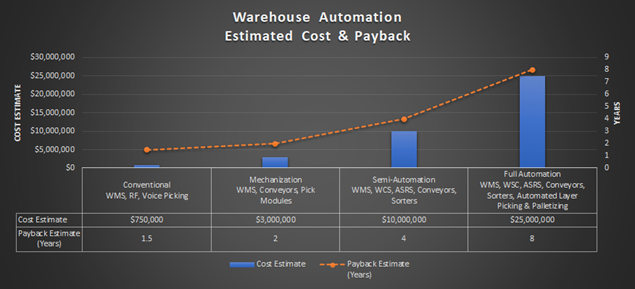When I graduated from business school I was hired by a large industrial parts distributor and inducted into their management training program. My rotation started in customer service where I was responsible for talking to customers, learning the product catalogue and taking orders… straight forward stuff. A few months later, I was rotated into warehouse operations and that is when things changed. I consulted a few of my colleagues who had been through a warehouse rotation and asked them if they had any advice on how to be successful in that environment. They all said the same thing, ”respect your workers and they will respect you.” Easy enough… or so I thought.
As time went on, I realized this company took respect for the hourly worker to a different level. As I dug deeper and asked more questions, I started to get the unspoken message and cultural dynamic that was implied: we can find someone with an MBA anytime, but our hourly workers are irreplaceable. Despite my freshly minted academic credential, the hourly workers at this organization mattered more. My first lesson in managerial humility did not end there. My employer wasn’t just paying lip service to the value of their hourly workers, they put their money where their mouth was.
In addition to the most competitive hourly compensation in the area, employees were consistently given 50% bonuses of their annualized salaries. After seven years with the company, people were given $9,000 a year to pay for their children’s college tuition. Employees were given safety training once a quarter and technical training 2 to 3 times per month. The warehouse was cleaned all day, every day. Employees had the latest scanning, conveyor, sortation and lift truck technology to do their jobs. At the end of the year, the company hosted a Christmas party at a five-star hotel and no expense was spared. The master of ceremonies that night? A forklift driver.
Did all this generosity for the hourly worker result in a more efficient and profitable business? Indeed, it did. The company promised next day delivery times before a 2 p.m. order cutoff. Sound familiar? Keep in mind this was 23 years ago. Amazon was four years old at the time and largely unknown. On average the company made 50% to75% net profit margin per order. Again, keep in mind we weren’t selling electric vehicles. We were selling industrial nuts and bolts in any quantity the customer wanted. Employee retention was so high, there was a well-known anecdote to demonstrate the point: A local union delegate showed up at the warehouse one day campaigning for our workers to organize. Within minutes, the union delegate was ushered off the property by the hourly employees. From what I understand, management never got involved and only heard about the incident second-hand a few days later.
A 2018 Gallup study (1) found that organizations with high levels of employee engagement achieve earnings-per-share growth that is more than four times that of their competitors. The study also found that organizations with higher levels of engagement realize better customer engagement, higher productivity, better retention and fewer accidents than organizations identified with low levels of employee engagement. My experience as a supply chain practitioner aligns with these findings. Since the time I worked for the company described above, I have consulted with and/or worked for 50+ companies. During this time, I have not seen another company with better order fulfillment capabilities or happier, more productive hourly workers. Below is what I have learned about managing and retaining hourly workers which I hope will help you attract and retain the best talent during this time of labor scarcity.
Automation is only part of the answer
Automation will play an important role in the modern warehouse or distribution center, but it is not an end-to-end solution for your labor problem. Conventional automation is expensive, difficult to implement and can take almost a decade to pay back. There is a large portfolio of mechanization or automation options available to increase productivity and reduce labor cost. Below is the order of magnitude on the investment requirement and payback expectations to automate a warehouse or distribution center (2).

The most affordable and readily deployable automation technology I have seen on the market is collaborative robotics. It is popular with large and small firms alike which are seeing a 20% to 30% productivity lift in full-case, split case or piece pick fulfillment operations. But that technology requires the input of a human operator for each transaction, hence the term “collaborative” robotics. I mention this because it reinforces the axiom that workforce inclusion is a critical dimension of a warehouse automation program. A successful investment in automation will require input from your existing workforce to estimate operational feasibility, implementation difficulty and potential productivity lift.
Compensation should be multi-dimensional
People are happy in their work for all kinds of reasons and financial compensation is just one piece of the puzzle. Will a $3 per hour raise for your put away operators get them to stay another 12 months? It depends on what those people really want from their work. And some of the time, employees don’t know what makes them happy until they see it. Like automation, increased financial compensation is only part of the answer to addressing labor scarcity. There are a host of other indirect compensation tools that can make work more meaningful. Cross-functional training/rotation, gamification, tuition reimbursement, profit sharing, equity sharing, guest/motivational speakers, team building, social events and career counseling are a few examples. Warehouse gamification is an emerging practice which involves creating digital competition events where employees can earn points – which can be redeemed for prizes – after hitting certain productivity targets. Kenco Logistics, a third-party logistics firm, implemented gamification into their warehouse and brokerage operations. On the warehouse side, the company saw a 3% to 5% improvement in productivity. In the brokerage operation, productivity improved 10% to 15%. The gamification is structured using team-based competition so the winning team may get a pizza party or an extra vacation day (3).
Service workers need a career path just like knowledge workers
In the American economy, we are more intentional about helping knowledge workers with career management and less so with service workers. I am not an economist or social scientist, but I believe this is one reason service workers are difficult to find and retain right now. Walmart seems to have recognized this trend and is aggressively addressing the issue. They have 200 academy location across the U.S. through which they provide instructor led and self-paced classes which incorporate technologies such as augmented reality, machine learning and in-store simulation training. The company has also launched an academic college – Live Better U – which features an online curriculum of more than 60 programs to pursue degrees and certificates in fields like business management, supply chain, cybersecurity and computer technology. Walmart covers 100% of the cost of tuition and books for field associates in the program. They also cover the cost of learning a second language and the full cost of a high school diploma or GED for associates and their eligible family members (4). A personal example is when I spent seven years with a large management consulting firm. One of the first actions they took was to set me up with a career counselor who was responsible for answering my questions, providing career advice, conducting my performance reviews and telling me exactly what I needed to do for a promotion. It was an excellent employee engagement strategy. You can design and implement a hybrid version of this career counseling model or Walmart’s academic model for your hourly workers. If people see a future career path in your company and there is a person dedicated to helping them, they may think twice about leaving for an extra $2 an hour.
Labor retention is a philosophical discipline, not just an economic one
At the age of 31, my dad made it to Partner with a well-respected law firm in New York City. Towards the end of his career, he wrote a memorandum for his junior associates on how to make it to Partner themselves. The first bullet point in his memo read, “Treat your support staff like royalty.” One might argue that my dad, along with some of the companies described in this essay, are just being magnanimous. While that is a fair argument, I think there is a deeper lesson to be learned about human psychology.
Self-Determination Theory (SDT) is a field of study in human psychology focused on people’s inherent needs for growth and happiness. Manhattan Associates, a leading supply chain software vendor, has been incorporating SDT into their [labor management] gamification technology. In a recent white paper (5) they explain that humans are driven by a need for autonomy, mastery and connection. In the context of work, this means people want three things:
- Control over their own path to success
- To enjoy their work and be good at it
- To work in community
As you think through your talent acquisition and retention strategy, some of the suggestions submitted here may work, others may not. However, if you structure programs that are anchored to the principles of human motivation and a genuine, deeply held belief that your support staff is critical to the success of your business, you will have a high probability of success.
(1) “Employee Engagement on the Rise in the U.S.”, Jim Harter, Gallup, 8/26/18
(2) ”15 Myths About Warehouse Automation Debunked”, John Clark, Viastore Systems, Date Unknown
(3) “Warehouses Turn to Gamification to Level Up Productivity”, Gary Wollenhaupt, Supply Chain Dive, 4/27/21
(4) https://corporate.walmart.com/about/working-at-walmart#benefits
(5) “Gamification In the Warehouse”, Manhattan Associates, Capability Brief, 2020

 Brewster Smith
Brewster Smith

 Craig Hurvitz
Craig Hurvitz
 Lauren Pace
Lauren Pace Ronna Larsen
Ronna Larsen
 Tom Golarz
Tom Golarz Michael Golarz
Michael Golarz